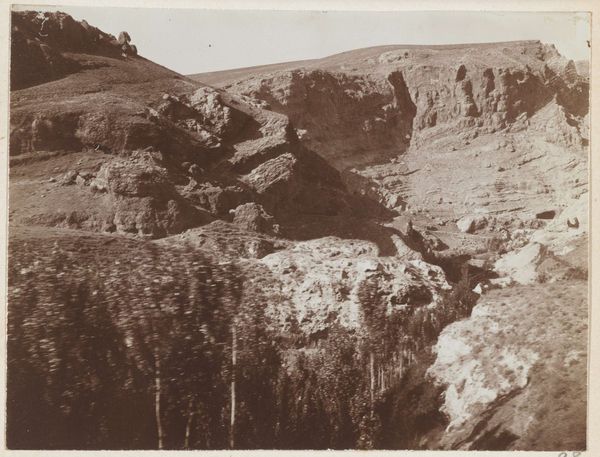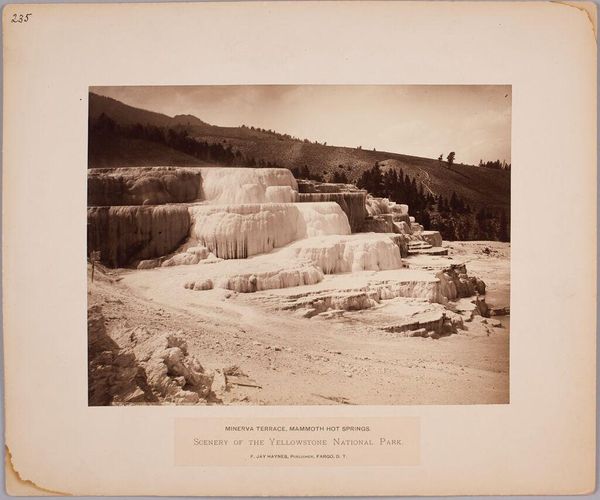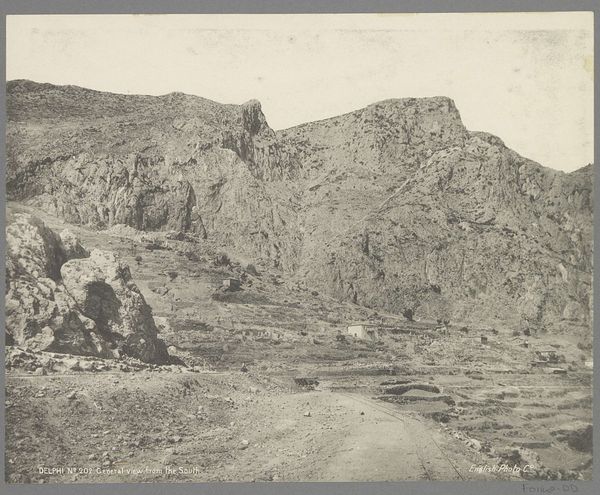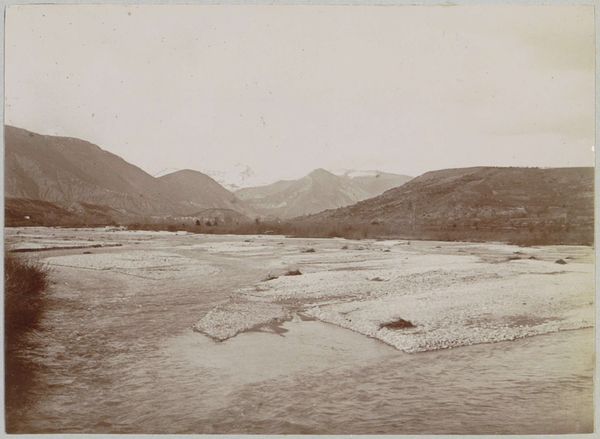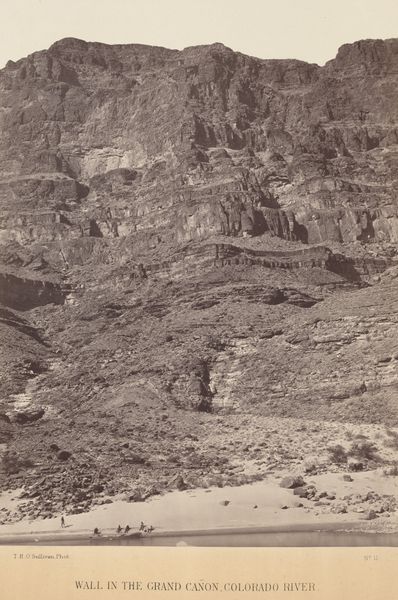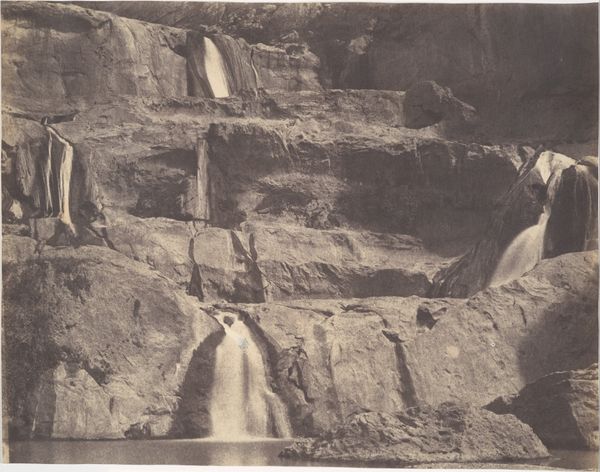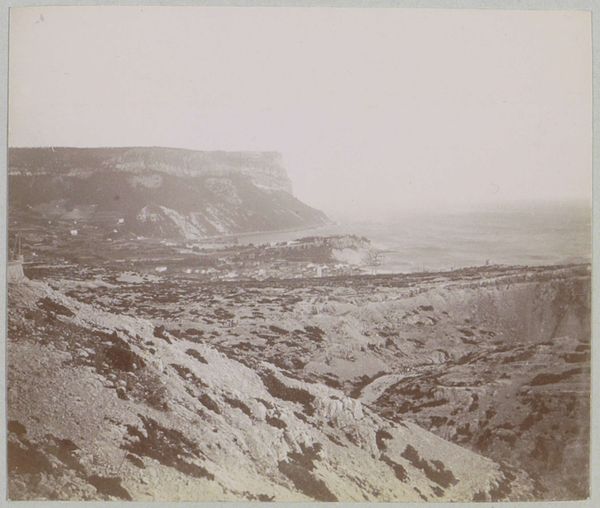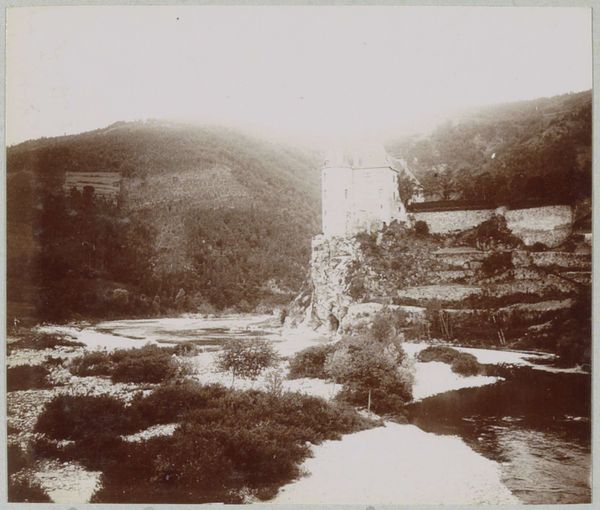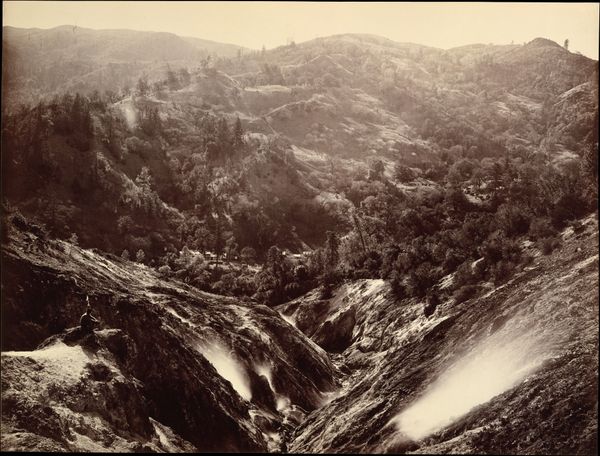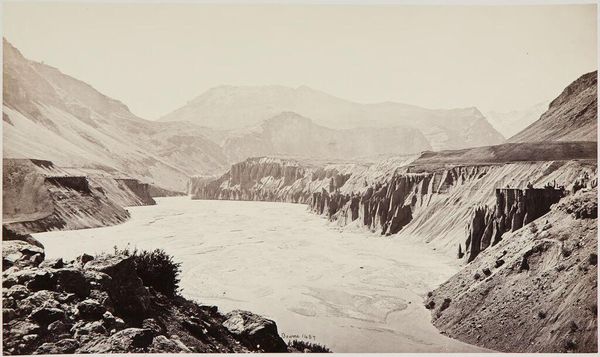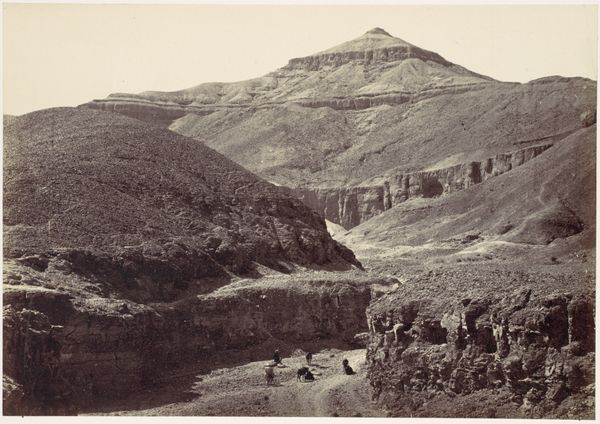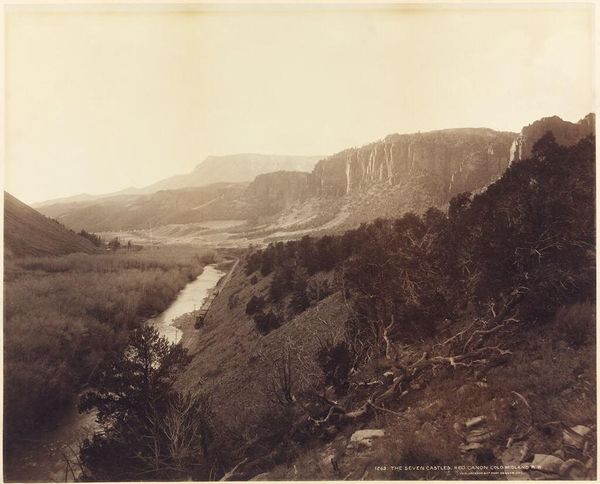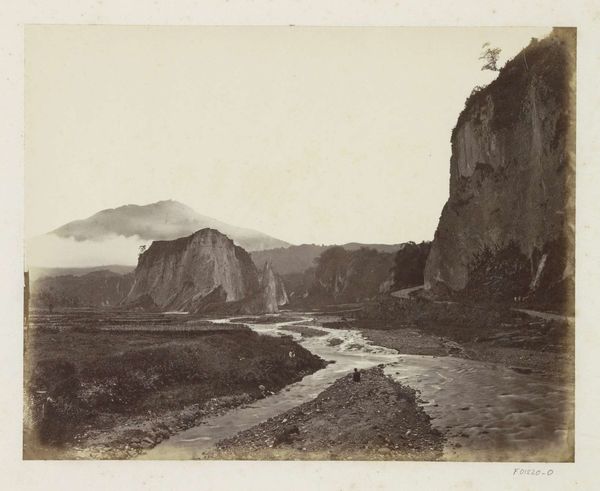
albumen-print, photography, albumen-print
#
albumen-print
#
landscape
#
photography
#
united-states
#
naturalism
#
albumen-print
Dimensions: 9 15/16 x 12 7/8 in. (25.24 x 32.7 cm) (image)15 7/16 x 19 3/4 in. (39.21 x 50.17 cm) (mount)
Copyright: Public Domain
Curator: This albumen print, captured by William Henry Jackson in 1873, depicts the Mammoth Hot Springs on Gardiner's River. The image is currently part of the Minneapolis Institute of Art's collection. Editor: Immediately, I notice the almost surreal, layered landscape. It’s hard to tell what the material actually *is* just by looking— the textures are intriguing and seem so fragile, almost like piled-up sugar. Curator: Jackson's photographs like this played a significant role in promoting the idea of Yellowstone as a national park, influencing public opinion and ultimately contributing to its establishment in 1872. He was part of the US Geological Survey. Think about it: these images were a means of knowledge dissemination but also a tool for nation-building. Editor: Fascinating! From a material perspective, understanding albumen printing illuminates its impact. The process—coating paper with egg white, sensitizing it with silver nitrate—allowed for incredibly detailed and sharp prints, perfect for capturing this landscape. What kind of labour was involved in carrying all that equipment there? And who processed these images? Curator: The photographic process certainly was labor-intensive and, in this case, instrumental in shaping the image of the American West. Its visual language, of pristine untouched nature, belies a more complex reality of displacement and resource extraction, as is typical of how naturalism portrayed things. Editor: It really pushes boundaries, doesn't it? I see photography, usually deemed more documentary, blurring into something painterly. I’m considering the environmental cost of that large-scale photographic activity in the parks – all those chemicals… Curator: Indeed, these landscape images reflect the era’s prevailing ideology and romanticized views about manifest destiny and wilderness. The hot springs become a symbol, almost, of the 'untamed' frontier—one needing taming, but also worthy of preservation. Editor: Absolutely. When we focus on the material aspects of Jackson's albumen print, and understand the full scale and means of production for this photograph, we unveil the complicated history behind these awe-inspiring landscapes, shifting from consumption to insight. Curator: The dialogue between pristine nature and industrial processes helps me to understand and historicize my place in the story. Editor: A sentiment which resonates for me. A lot to chew on!
Comments
No comments
Be the first to comment and join the conversation on the ultimate creative platform.
